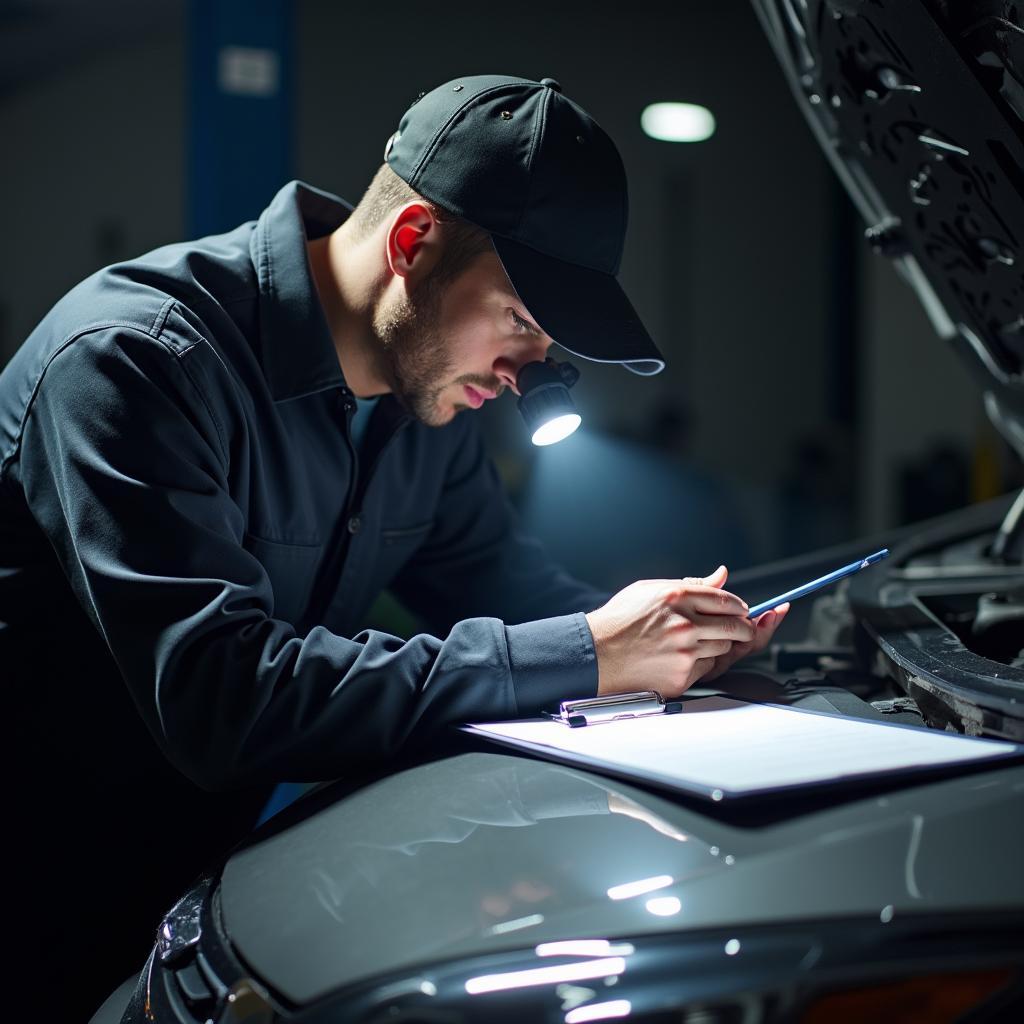Understanding the journey your car takes after an accident can be confusing. This comprehensive guide demystifies the car body repair progress road, providing clarity and empowering you to navigate the process confidently.
Understanding the Stages of Car Body Repair
Car body repair is not a one-size-fits-all process. It involves a systematic approach tailored to the extent and type of damage. Here’s a breakdown of the typical stages:
1. Damage Assessment and Estimate
The first step involves a thorough inspection of your vehicle to identify the visible and hidden damage. Experienced technicians utilize specialized tools and techniques to assess the full scope of repairs needed. Based on the evaluation, a detailed estimate outlining the costs and timeline is provided.
 Car Body Repair Damage Assessment
Car Body Repair Damage Assessment
2. Disassembly and Parts Ordering
Once you approve the estimate, the repair process begins. Technicians carefully disassemble the damaged areas, removing parts like bumpers, fenders, or doors to access the underlying structure. This stage also involves ordering necessary replacement parts, ensuring timely completion.
3. Structural Repair
Addressing structural damage is crucial for your vehicle’s safety and integrity. Technicians employ advanced techniques like frame straightening, welding, and panel replacement to restore the vehicle’s frame to its factory specifications.
4. Bodywork and Panel Alignment
With the structural integrity restored, skilled bodywork specialists take over. This stage focuses on hammering, filling, and sanding the damaged areas to achieve a smooth and seamless surface. Precise panel alignment ensures proper fit and finish.
5. Priming and Painting
Before the final coat, the repaired areas are primed to create a smooth and adhesive base for the paint. The painting process involves matching the original color and applying multiple coats for a flawless finish, followed by a clear coat for protection and shine.
6. Reassembly and Final Inspection
The reassembly stage involves putting all the pieces back together, reinstalling the repaired and new parts, and ensuring everything functions correctly. A final meticulous inspection guarantees all repairs meet the highest standards of quality and safety.
Factors Influencing Car Body Repair Timelines
While the stages provide a general framework, the actual car body repair timeline depends on several factors:
- Severity of Damage: Minor dents and scratches require less time than significant structural damage.
- Availability of Parts: Sourcing specific or rare parts may extend the repair duration.
- Shop Workload: Busy repair shops might have a longer turnaround time than those with more immediate availability.
- Insurance Approvals: Insurance company assessments and approvals can impact the overall timeline.
Tips for a Smoother Car Body Repair Experience
- Choose a Reputable Repair Shop: Opt for a shop with certified technicians, modern equipment, and a proven track record.
- Document Everything: Take clear photos of the damage before and after the repair.
- Maintain Open Communication: Stay in touch with the repair shop for updates on the progress.
- Understand Your Insurance Policy: Familiarize yourself with your coverage and deductible.
Conclusion
Navigating the car body repair progress road can feel overwhelming, but understanding the stages and factors involved empowers you to make informed decisions. By choosing a reputable shop, maintaining open communication, and staying informed about your insurance coverage, you can ensure a smooth and successful repair experience.


